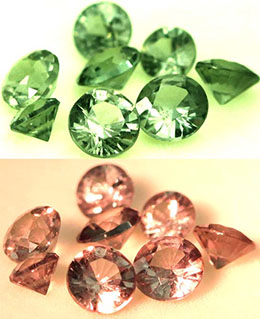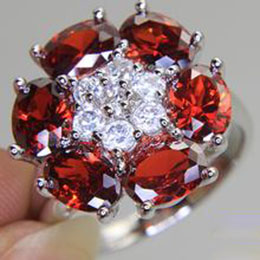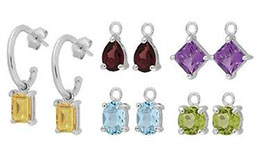Garnet Gemstones
Garnet Gemstones Information

Any stone that modifies its color is a very uncommon, which is discovered and hunted after by collectors. Most of the garnets display the widest multiplicity of color changes in the stone world, with roughly every shade exhibited. It is usually believed that garnets arrive in each color of the rainbow apart from blue.
This is still accurate with natural light, but there are latest discoveries about garnets that turn into azure through artificial light. The said color change is simply because of freak in structure with this diversity of garnet. It is a sample of pyrope-spessartine that usually changes its hue based upon the supply of light.
It also depends on its specific spot and what type of light it is uncovered to the stone’s color that will modify it from red into the green. Some individuals call such mood stone because it shows several, different colors during the track of the day. In daylight, an insignificant speck of red can be perceived blinking from the depths of the gemstone.
During, daylight it become visible in grey, green, and blue. Under the shortest light, it occurs as lilac, or as a grape-tinted amethyst. In candlelight, it produces more blood-spattered color. On the other hand, the ability for such stone to show different colors is not based on the wearer’s temper; but due to its light, or wavelength.
Naturally, one color is perceived in light-sources which are rich in the blue end of the range such as glowing or natural dawn, and one more is the light sources, which are rich in red-wavelengths such as glowing light. Colors Change Garnets are often engrave as round radiant, stifle, oval and considerable cuts.
Moreover, color change garnets are typically available in pyrope and spessartite through its composition. The shortage of pleochroism significantly means that course is not a dilemma and the equi-dimensional form of the rough usually gives excellent yields from rough to cut. Color Change Garnets are not usually heated or improved in such way.
Garnets, most often, garnets are of a reddish-maroon color. The word "garnet" originates from the Latin word "granatus," signifying “seed.” This is because a garnet, when found in its matrix rock, often resembles a small round seed.

Garnet is a highly sought-after precious gem, which for centuries has been widely used in the creation and encrustation of jewelry as well as everyday items.
The variations in garnet's composition are reflected in the variability of the color. Garnet comes in a number of different chemical compositions, including Almandite, Pyrope, Spessartite, Andradite, Grossular, and Uvarovite. Because of this, garnet comes in an array of natural colors such as orange, red, brown, green, and yellow.

Garnets are thought by some to stimulate the willingness to serve others while still remaining true to one. They may also stimulate the second chakra and boost creative energy. Some believe that garnets can help balance sexual energy, restore damaged DNA, and amplify the body's assimilation of iodine, calcium; magnesium, and vitamins A and E. Emotionally, garnets may help to incorporate experiences and assist in self-discovery. They may also have a protective influence and offer a connection to other dimensions. Some even believe that garnets can help one recognize flashes of insight and apply them to one's life.
The chemical composition of garnet is D3T3 (SiO4)3 and its hardness ratio is 6-7.

Comment (0)